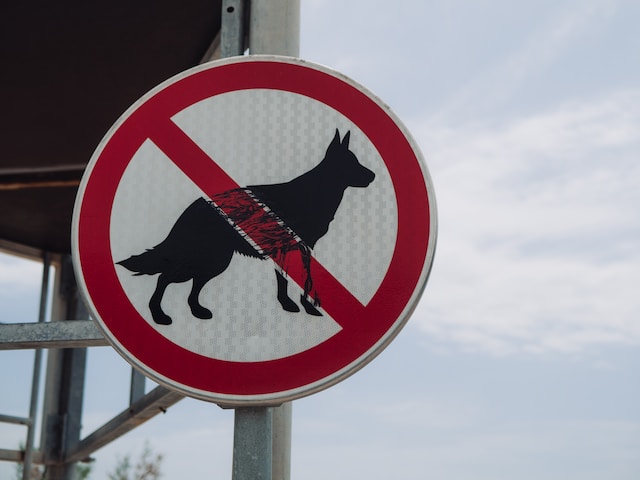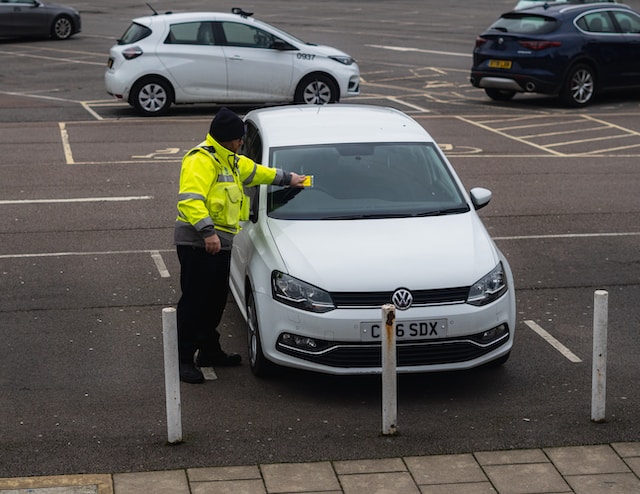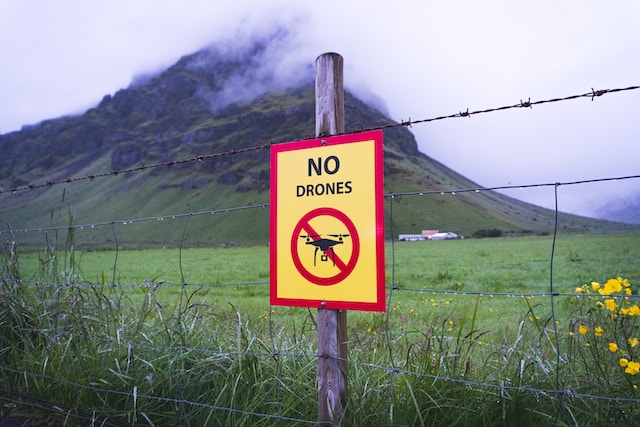Regulation refers to the establishment of rules or laws for a specific industry or activity, while enforcement is the process of ensuring those rules are followed through penalties and consequences for non-compliance. Enforcement is essential in maintaining order and upholding regulations because without it, regulations would be meaningless. Similarly, regulations serve as a guide for what should be enforced–without established guidelines, law enforcement officials would not know how to carry out their duties effectively.
What is regulation?
(Photo by Chris Curry on Unsplash )

Regulation refers to the set of rules and guidelines that are established by a governing body, such as a government agency or legislative body. These regulations aim to shape and control various aspects of society, from business practices to environmental protection. Regulations can span across different industries and sectors, covering everything from finance and healthcare to transportation and energy.
The primary purpose of regulation is to ensure public safety, promote fair competition, protect consumers’ rights, prevent market failures, and encourage social welfare. For instance, the FDA regulates the production and distribution of food products in order to prevent unsafe or harmful substances from entering the food supply chain.
Regulations can take many forms – they can be legal statutes passed by Congress or administrative codes created by regulatory agencies. In addition to setting standards for behavior or conduct in specific areas like health care provision or financial management; regulations also often establish licensing requirements for professionals working in these fields.
Regulation serves an important function in ensuring that society functions smoothly while preventing abuses by individuals and organizations alike.
What is enforcement?
(Photo by Caspar Rae on Unsplash )

Enforcement is the act of ensuring compliance with a particular regulation or law. It involves monitoring and overseeing the behavior of individuals, businesses, or organizations to ensure that they adhere to the regulatory framework put in place.
Enforcement can take many forms, such as inspections or audits, investigations into alleged violations, and imposing penalties for non-compliance. The aim of enforcement is to promote public safety and protect consumers by holding accountable those who fail to follow regulations.
Effective enforcement requires adequate resources and personnel with specialized knowledge about specific industries or sectors. Law enforcement agencies play a critical role in enforcing criminal laws while regulatory agencies are responsible for enforcing administrative regulations.
Proper enforcement ensures that the regulatory system functions effectively by deterring non-compliant behaviors from occurring and promoting fair competition among regulated entities.
Regulation Vs. Enforcement – Key differences
Regulation and enforcement are two terms that often get used interchangeably, but they have different meanings. Regulation refers to the rules, laws or guidelines put in place by government or other regulatory bodies to govern businesses and industries. Enforcement, on the other hand, refers to the act of ensuring that these regulations are followed.
The key difference between regulation and enforcement lies in their focus. Regulation is concerned with setting standards for how things should be done while enforcement deals with making sure those standards are being met. For example, a regulatory body might set safety standards for construction sites while an enforcement agency would monitor compliance with these regulations.
Another important difference between regulation and enforcement is their approach towards non-compliance. Regulatory agencies can issue warnings or fines if businesses fail to follow the established guidelines while enforcers can use more punitive measures such as legal action or even imprisonment.
It’s important to understand the differences between regulation and enforcement as they play crucial roles in maintaining public safety and controlling business practices. While both concepts work together towards achieving common goals, each serves a unique purpose which must be respected and understood separately.
What does it mean to enforce a regulation?
Enforcing a regulation means ensuring that individuals or businesses comply with the rules and requirements set by regulatory authorities. This involves monitoring, inspecting, investigating and taking necessary action against non-compliance.
Enforcement can take various forms, including fines, penalties, warnings or legal proceedings against those who violate regulations. It is usually carried out by specialized agencies or departments authorized to enforce specific laws.
Moreover, enforcement helps in maintaining a level playing field for all stakeholders involved in an industry. It ensures that everyone adheres to the same standards of quality and safety while conducting their business activities.
Furthermore, enforcing regulations aims to protect consumers from harm caused by unscrupulous practices within various industries. For instance, food safety regulations ensure that products sold are fit for human consumption.
Enforcing regulations is essential in ensuring compliance with established standards of quality and safety across different sectors. By doing so it protects consumers from harm and maintains fair competition within industries.
What is the purpose of enforcement?
The purpose of enforcement is to ensure that regulations, laws or policies are followed and adhered to. It acts as a deterrent for individuals or organizations who may consider breaking the rules by imposing penalties, fines or legal consequences. Enforcement also helps maintain order and safety within society.
Without proper enforcement, regulations would be meaningless as there would be no repercussions for those who choose not to follow them. For example, traffic laws such as speed limits can only be effective if they are enforced through tickets and fines for violators.
Enforcement also plays a crucial role in protecting public health and safety. Regulations pertaining to food safety, workplace safety and environmental protection all require strict enforcement measures to prevent harm caused by non-compliance.
Effective enforcement requires collaboration between various government agencies, law enforcement bodies and private sector actors responsible for implementing the regulations. Moreover, it should be carried out fairly without bias towards any particular group or individual.
The purpose of enforcement is critical in upholding regulations that protect people’s well-being while maintaining social order.
What are the two types of regulation?
Regulations are rules and standards set by government bodies or other organizations to ensure compliance with certain policies. There are two types of regulation: Economic and Social.
Economic regulations govern industries such as finance, transportation, and energy. These regulations aim to promote competition, prevent monopolies, and protect consumers from unfair practices. For example, the Federal Reserve regulates banks to ensure they maintain adequate reserves to cover deposits.
Social regulations focus on protecting public health, safety, and welfare. They cover areas such as food safety, environmental protection, civil rights protections for workers and consumers against unsafe products or services. An example of this is the Clean Air Act which sets emission standards for factories in order to reduce air pollution.
Both types of regulation serve important purposes in maintaining a functioning society that protects its citizens from harm while promoting fair competition among businesses.
Is regulation and control same or different?
Regulation and control are often used interchangeably, but they have distinct differences. Regulation refers to rules or laws put in place by a government or organization to ensure standards are met, while control refers to the measures taken to make sure those regulations are being followed.
Regulations can be seen as guidelines for behavior within a particular industry, while controls establish procedures for ensuring compliance with those guidelines. For example, regulations might require that food products meet certain safety standards, while controls would include inspections of processing facilities and labeling requirements.
In some cases, regulation may not involve any form of enforcement at all. Instead, it relies on voluntary compliance from organizations or individuals who wish to maintain their reputation as responsible members of society. On the other hand, control is typically enforced through penalties for non-compliance.
While there is overlap between regulation and control in terms of their goals (i.e., promoting safety and ethical behavior), they differ in their methods of achieving these goals. Ultimately, both are necessary components of maintaining order within various industries and protecting consumers from harm.
What is an example of a regulation?
Regulations can vary from industry to industry, but they all share the common goal of promoting safety, fairness and accountability. An example of a regulation in the financial services industry is the Securities Exchange Act of 1934. This act requires public companies to report their financial results on a regular basis and provides guidelines for insider trading. The regulation aims to promote transparency and prevent fraudulent activities.
Another example of a regulation is the Clean Air Act, which was enacted by Congress in 1963. This act sets limits on air pollutants like sulfur dioxide, nitrogen oxides and particulate matter that are released into the atmosphere by industrial facilities or vehicles. The goal is to protect public health by reducing harmful emissions that contribute to respiratory diseases.
In addition to federal regulations, there are also state and local regulations that govern various aspects of our lives such as building codes, food safety standards and environmental protection laws.
Regulations serve an important purpose in ensuring that businesses operate ethically while protecting consumers and communities from harm.
What is an example of enforcement?
Enforcement is the process of ensuring that regulations are being followed. This can involve a variety of tactics, including fines, penalties, and legal action. One example of enforcement can be seen in traffic laws. When drivers break the speed limit or run a red light, they may receive a ticket or have points added to their license as punishment for violating these regulations.
Another example of enforcement is in workplace safety. Employers must comply with health and safety regulations to ensure that their employees are working in safe conditions. If violations occur, regulators may investigate and issue penalties such as fines or even shutting down operations until the issues are resolved.
Environmental protection also requires enforcement measures to protect natural resources from harm caused by human activities. Regulatory agencies monitor industrial practices and enforce compliance with environmental standards through inspections, audits, and other means.
Enforcement ensures that rules put in place by regulatory bodies are being adhered to so that everyone plays by the same set of rules without harming others or themselves while doing so.
Featured Image By – Martin Sanchez on Unsplash








